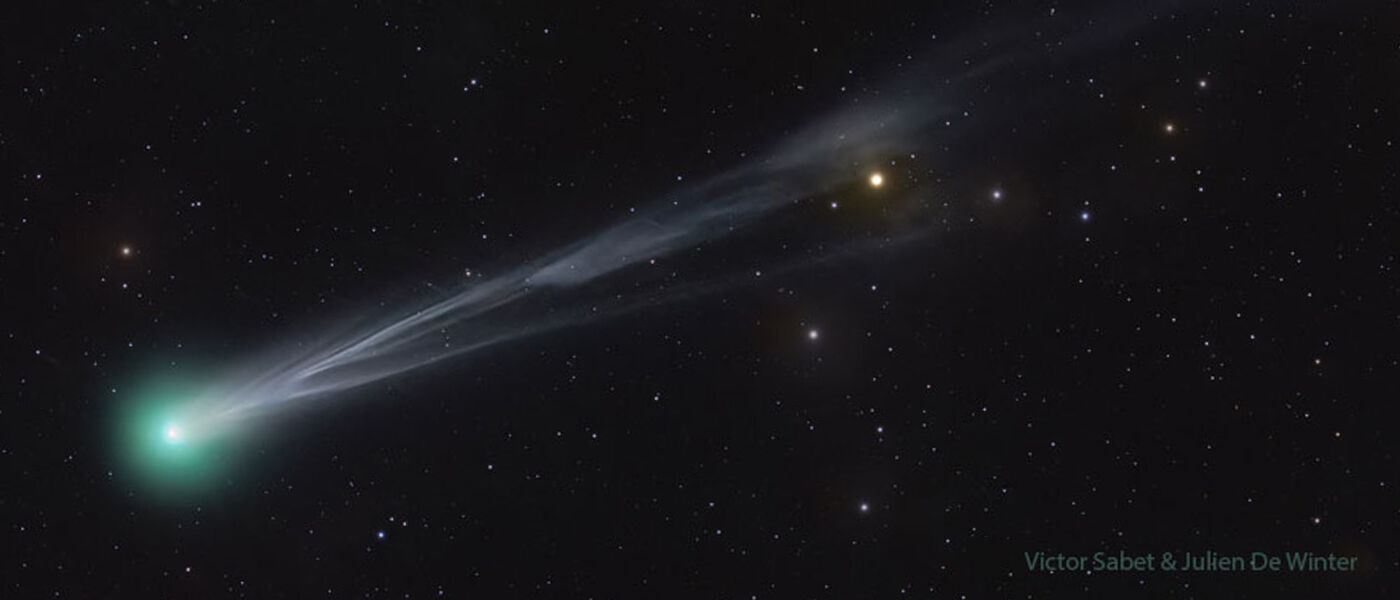Comet Lemmon Visible Through October and Early November
This new arrival to our skies was first discovered on January 3, 2025, at the Mount Lemmon Observatory in Arizona and has slowly been getting brighter in our skies as it gets nearer and nearer to Earth. To view the comet, step outside around an hour and a half after sunset (around 7:30 pm in New Jersey) and find the Big Dipper in the northwestern part of the sky. Look in the sky about 45-60 degrees west from the end of the handle of the Big Dipper. That’s about the width of five hands at arm’s length. Search for a very faint, fuzzy green tinted object in that part of the sky. Comets like this are very faint. To see it with just your eyes you’ll need a very dark sky. Try to get as far away from the city lights as you can. On the other hand, if you have binoculars or a telescope, you should be able to spot the comet in brighter, city skies.
Comet Lemmon’s position marked as a blue-green colored dot in the sky, labeled with its position on different days in October. The Big Dipper is shown to the right of the image in the northwest, and the bright star Arcturus low in the sky in the west-north west. Map created on an Evans & Sutherland Digistar 7 system.
Header:
Comet Lemmon as seen on September 26, 2026
Image Credit & Copyright: Victor Sabet & Julien De Winter
